A new study by NASA and a bill passed by the Oregon Senate yesterday have at least one thing in common. They both sound the alarm that transportation-related greenhouse gas emissions (a.k.a. too many cars and trucks on the road) are harmful to the planet and they need to be curtailed.
The NASA study analyzed emissions based on economic sectors (as opposed to the more commonly studied individual chemical causes) and found that “motor vehicles emerged as the greatest contributor to atmospheric warming now and in the near term.”
“A sizable majority of people want to live in communities that allow them to drive less often.”
— Richard Devlin (D-Tualatin), Oregon Senate Majority Leader
In an article about the study published on the NASA website, lead scientist Nadine Unger said, “Targeting on-road transportation is a win-win-win.. It’s good for the climate in the short term and long term, and it’s good for our health.” For more on the study, read a Q&A with Unger here.
In other greenhouse gas news, the Oregon Senate has passed SB 1059, a bill that directs the Oregon Transportation Commission “to adopt statewide transportation strategy on greenhouse gas emissions.” (The OTC is a five-member, governor-appointed body that sets state transportation policy.)
In a statement about the bill, Senate Democrats said SB 1059 “lays the groundwork” for a “state-level strategy to reduce greenhouse gases from transportation sources.” To do that, the bill would develop a “toolkit” to help cities tackle the issue, it would set greenhouse gas reduction targets, encourage more public education on the issue, and more.
The bill passed on a near party-line vote. The only Democrat to vote against the bill was Senator Rick Metsger who was quoted by The Oregonian as saying the bill shouldn’t pass because it doesn’t “mention anything about economic vitality,” and “We can certainly reduce greenhouse gases if nobody is working.”
On the Democrat side, one of the bill’s chief supporters, Alan Bates (Ashland) said, “We must design our cities more efficiently, everything from timing our traffic signals to increasing our ability to run errands with fewer or shorter trips in the car.”
Senate Majority Leader Richard Devlin (D-Tualatin) added that, “A sizable majority of people want to live in communities that allow them to drive less often.”
These two developments speak to growing awareness that more needs to be done to reduce the amount of unneccessary trips taken by motor vehicles in our cities. We all know this is a serious environmental, health and transportation issue, all that’s missing is the political will (and the money that follows) to do something about it. To hear these kind of statements and to see this kind of legislative action from Salem is encouraging, but real action that makes an impact is what we need.
With success in the Senate, SB 1059 now moves onto the House for further consideration.
UPDATE: SB 1059 passed the House today (2/24) and is now expected to be signed by the Governor.



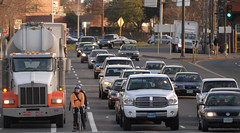
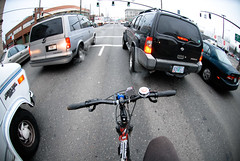
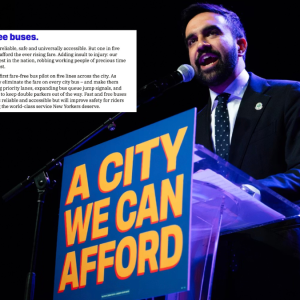
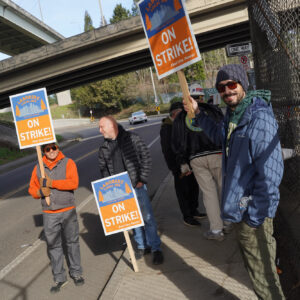
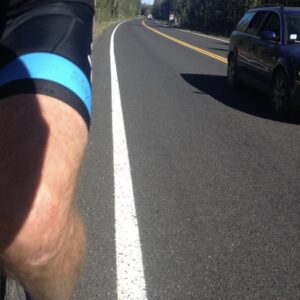

Thanks for reading.
BikePortland has served this community with independent community journalism since 2005. We rely on subscriptions from readers like you to survive. Your financial support is vital in keeping this valuable resource alive and well.
Please subscribe today to strengthen and expand our work.
It is good to see that both NASA and the state of OR are anti-CRC.
THe “Global Warming is a Hoax” folks will now claim they are smarter than NASA
The CRC would actually be better for the enviroment. Cars won’t be sitting in a traffic jam.
Jim:
Since you have no evidence to prove that last statement, we’ll just forget you said that.
Senator Metsger doesn’t get it – economic growth is not desireable. We need a steady-state economy, not one based on exponential growth.
Senator Bates doesn’t get it either – efficiency is the enemy. That’s the mindset that got us into this situation in the first place. Liveability is key. While cars will be with us for a long time, we need to encourage more people to forego them for short trips – trips less than 3 miles should be made (when possible) by bike, and those under 1/2 mile by bike or walking. We can’t mandate it (and shouldn’t), but we should encourage it rather than discourage it.
And timing traffic signals is a great idea, provided that they service other modes besides cars. It does no good to encourage people to walk, and then make them wait 5 minutes at a light to cross Powell, or MLK, or Barbur. Traffic lights are not supposed to ease traffic flow – they are intended to prevent collisions and to allow everyone access to the street grid. They should not be prioritized according to throughput, they should be prioritized for equal accessibility – the traffic system will rebalance itself accordingly.
jim (#3) – ironically, the opposite would occur – the additional capacity would encourage more frequent car trips, more consumption, more gas, more emissions, and more congestion. Road capacity is the single greatest determinant of these items.
There is no way that cars sitting in a traffic jam could ever be more clean than cars moving freely. We need infrastructure that will be able to handle the millions of more people that are going to inhabit the metro area in years to come. perhaps fuel will change- electric, nat gas, hybrid… but there will be more vehicles no matter what you think or wish. there will be more trucks bringing supplies for all those people. We can’t leave them sitting in a traffic jam with engines idling getting 0 miles per gallon.
The only reason I apose the crc is because the cost has soared to way too much money. We do need to add lanes across the river though. I think the 3rd bridge option would be best. How would you like it if there was only 1 bridge going to downtown? instead of going across broadway for example you would detour to morrison and wait in line not moving to get across? probably not since I rarely see cyclists have any pacience.
Mat-
I have no problem with walking or biking for short trips. I am not going to walk to vancouver though. Efficiency is not an enemy, it is the best way to do things. take a look at the max train traveling at night, it very often has empty cars- it would be more eficient if that train was parked and those few people were driving cars
Efficiency and convenience *are* the enemy, jim – inconvenience causes people to consolidate trips, go without, consume less, and look for alternatives. It reduces VMT, reduces pollution, and keeps people healthy – it also encourages compact development and walkable neighborhoods. Convenience encourages laziness, increases VMT, increases the number of trips and the percentage of single occupancy vehicles, and discourages people to look at alternatives.
And I’m not asking you to walk to Vancouver – a car is totally appropriate for that trip (so is a bike, or transit, depending on how much time you have). I disagree on MAX, though – can you honestly say that 8-10 cars are less polluting than or more efficient than MAX? They are more flexible, but that’s about it.
Something I spotted on Yahoo…
http://realestate.yahoo.com/promo/americas-worst-bottlenecks
I would say 8-10 cars would be more eficient than 1 max, less poluting and more cost effective. the polution and fuel use for the max is just generated somewhere else than at the train is all. If we had to pay train fare based on the actual cost to operate a train then even the wealthy would not be able to afford a train ride
how much black carbon does one of NASA’s space shuttles put out for 1 launch?
I love it! Debate about the merits of public transportation and more bridge lanes. Matt, you hit the nail on the head with your comment about the need for a steady-state economy. Our #1 national priority should be figuring out what such an economy should look like, and immediately transitioning to it over the next 20+ years (or however long it takes without causing revolt or undue hardship).
Unfortunately, those who realize this and/or advocate for it are in the extreme minority. The only economist who I’ve stumbled upon who seems to realize this is Daly, and even his proposals seem rather vague to me. Anyone else I should be reading? I’m always on the lookout for someone who can explain to me how a steady-state economy would work.
We used to have a steady state economy, it was the wood industry. Free up some of the trees to harvest and we can be there again.
@13 The trees are basically gone. The big old growth forests won’t come back in your or my lifetime. The tiny remnant being protected isn’t a big deal commercially.
@10 Wrong. The MAX can run on low or no-carbon sources now – the cars aren’t going to be doing so any time soon (electric cars aren’t going to be a substantial part of fleet in the next decade or so). And those empty MAX cars are balanced by very full ones so that overall use of energy per trip is still lower than cars.
And if you think global warming looks threatening now you ain’t (likely) seen nothing yet. We’ve seen the results of these sorts of anti-science delaying actions before (notably regard smoking and cancer). Eventually the science wins through – and in this case that will likely result in a massive turn-around a decade or so down the road.
Cities that aren’t prepared are going to be in a world of hurt. Don’t believe me? Just look at how the Chinese are simultaneously building coal plants like mad (cause they’re corrupt and need to keep the wheels from coming off in the short run) while laying down high speed rail at an amazing rate, moving to dominate the wind and solar industries and generally positioning for the Great Shift ahead.
Reality is that which is left after the spin merchants have gone onto other subjects….
If the Oregon Senate agrees with NASA I will assume there will be zero new roads (or auto lanes) going forward, we have enough already. Convert those roads into bike lanes!
wrong Greg- MAX doesnot run on zero emisions, not anywhere close to what you might fantasize
are we doing that thing where we talk about “the actual cost” of this or that while ignoring the actual cost of auto use?
40% of the elctricity we use in oregon comes from coal. To power just 1= 100 watt lightbulb for 1 year that plant puts out 1852 pounds of carbon dioxide. http://www.howstuffworks.com/question481.htm
how much more eletricty is it going to take to power those big trains than a lightbulb?
maybe someday those trains will be made more clean- but it hasn’t happened yet. It would be nice if they were hydrogen powered, or perhaps LNG
http://www.coyoteblog.com/coyote_blog/2008/08/update-on-my-li.html
You can see the comparisons here for different transportation modes